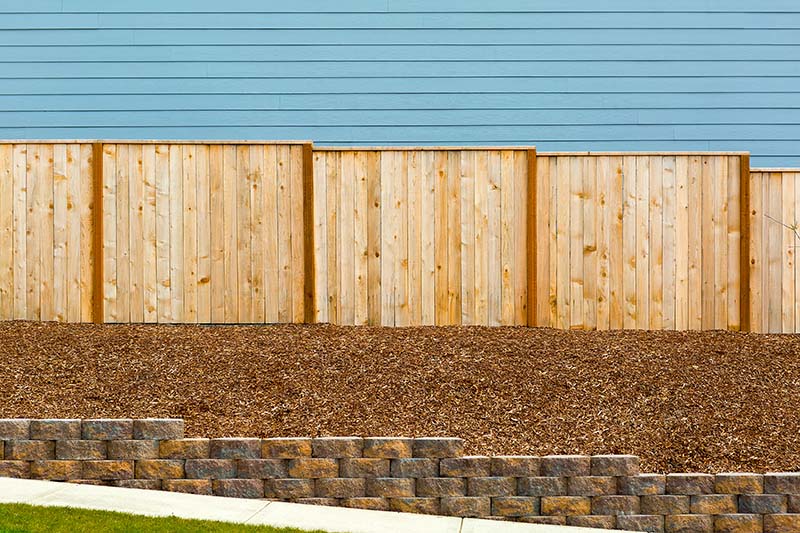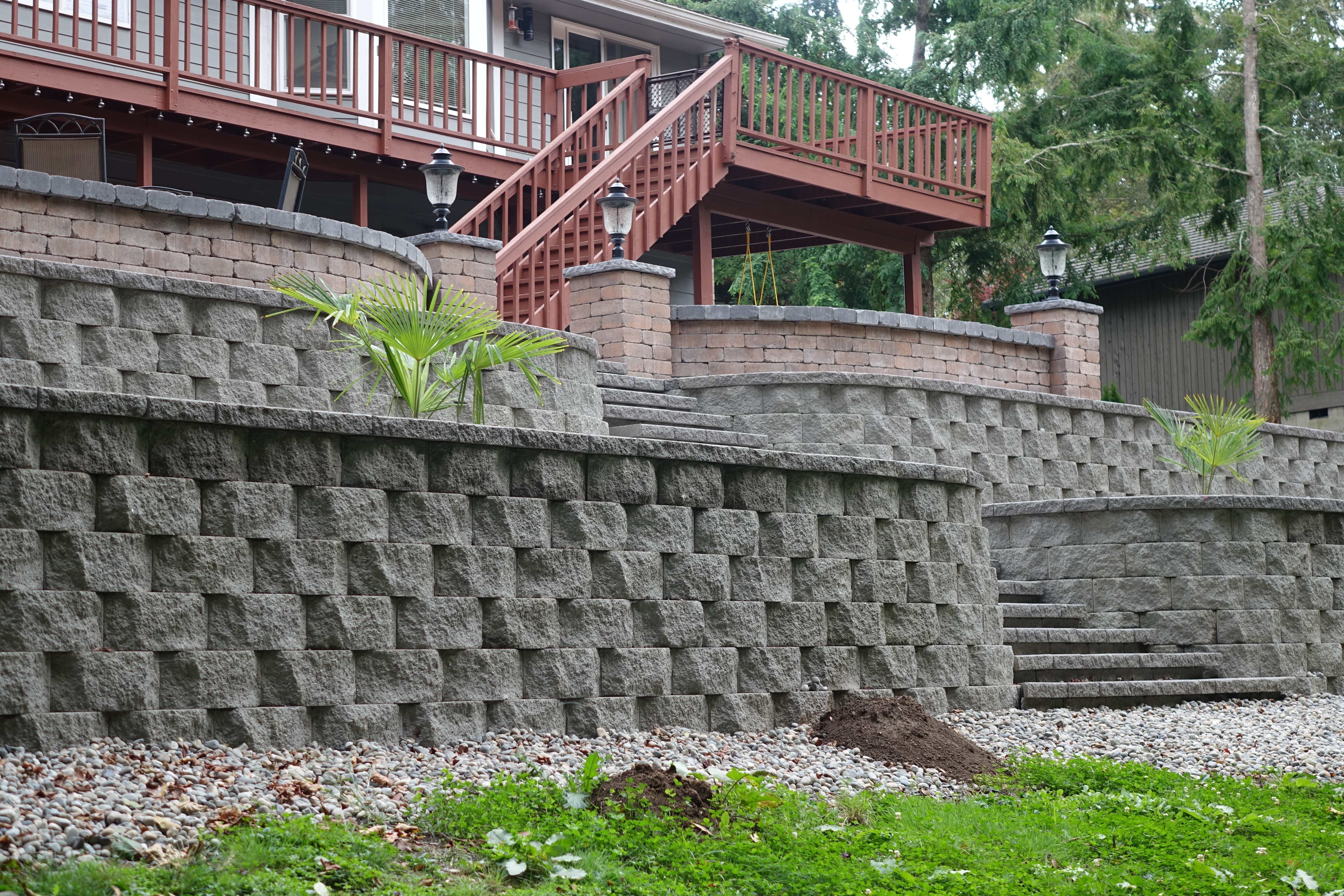Here’s why OKC Precision Retaining Walls are vital for stabilizing uneven land
Here’s why OKC Precision Retaining Walls are vital for stabilizing uneven land
Blog Article
Secret Factors To Consider for Building Effective Retaining Walls in Your Yard
When you're considering constructing a retaining wall surface in your yard, it's essential to think of a number of key aspects. The wall surface's purpose, the materials you'll use, and the particular soil conditions can all impact its efficiency and durability. You'll also require to navigate local structure codes and strategy for appropriate drainage. Just how do you guarantee your layout not only meets these requirements however also improves your landscape? Allow's check out the crucial steps together.
Understanding the Function of Your Retaining Wall
When you think regarding constructing a retaining wall, consider its primary objective: stabilizing dirt and preventing disintegration. Retaining walls supply essential assistance for sloped landscapes, assisting to keep dirt integrity. You'll find they're important in areas where water overflow might otherwise wash away soil, leading to pricey fixings and landscape damage.
By keeping back earth, these walls develop level surface areas for yards, patio areas, or paths. This not just improves your backyard's visual appeals yet also promotes better drain, lowering water merging in undesirable locations. If you're handling steep slopes, a well-constructed retaining wall can stop landslides, making certain safety and security for you and your building.
Inevitably, recognizing the objective of your retaining wall surface will certainly assist your layout choices and help you develop a useful, sturdy framework that fulfills your requirements. So, take a moment to examine your landscape; it'll settle in the long run.
Picking the Right Products
When selecting materials for your retaining wall, you'll intend to take right into account durability, aesthetic appeals, and expense. Each variable plays a vital role in ensuring your wall surface stands the test of time while looking terrific and fitting your spending plan. Allow's discover just how to make the most effective choices for your job.
Material Longevity Variables
Choosing the best materials is vital for the long life and efficiency of your retaining wall, since their durability straight impacts the wall surface's capability to withstand ecological anxieties. Start by considering your neighborhood climate; products like concrete and stone stand up to wetness and temperature level variations well. If you stay in a location vulnerable to heavy rainfalls, select products with good drainage residential properties, like crushed rock or porous blocks, to stop water buildup.
Additionally, assume concerning the dirt conditions on your property. Some products carry out far better in particular dirt types, so it is necessary to match them appropriately. Be conscious of prospective wear from pests or disintegration. Picking resilient products guarantees your retaining wall stands strong, shielding your yard for many years ahead.
Visual Style Selections
Sturdy materials not only ensure your retaining wall's architectural stability yet additionally play a key function in its aesthetic allure. When picking the right products, consider exactly how they enhance your landscape. All-natural rock uses a classic, rustic appearance, while cinder block can give a sleek, modern finish. You might also consider using timber for a cozy, organic feeling. Color and texture matter, also; pick tones that balance with your home and yard. Do not fail to remember regarding the wall's form-- bent walls can produce a softer appearance, while straight lines can feel a lot more organized. By very carefully choosing products that straighten with your aesthetic vision, you'll boost your outdoor room while guaranteeing your wall surface stands strong versus the aspects.
Cost-Effectiveness Evaluation
Selecting the best materials for your retaining wall isn't practically aesthetic appeals; it's also necessary for your budget. When selecting products, take into consideration both ahead of time costs and long-lasting longevity. Concrete blocks may be more expensive at first, however their long life can save you cash on repairs. On the other hand, hardwood can be a lot more budget friendly but might need substitute sooner.
Do not fail to remember to consider upkeep costs too (OKC Precision Retaining Walls). Some materials, like all-natural rock, can include appeal and need much less upkeep, while others might need routine treatments
Inevitably, consider the benefits and drawbacks of each alternative versus your budget and the wall surface's desired function. Investing carefully in products now can stop expensive issues down the road. Select materials that balance price and performance successfully.
Examining Soil Problems and Water Drainage
As you start your task, examining soil problems and water drainage is crucial for the success of your retaining wall surface. Beginning by examining the kind of dirt in your lawn. Sandy soil drains well but does not have stability, while clay soil can maintain moisture, resulting in push on your wall surface. Examine the dirt's wetness web content by excavating a little opening and observing how rapidly it dries out.
Following, examine the incline of your yard. If water normally streams toward your wall surface, you'll require to implement a drainage remedy to stop disintegration and pressure accumulation. Consider installing perforated pipes or gravel backfill behind the wall to assist in water drainage.
Lastly, observe any nearby trees or plant life; their origins can affect soil security. By recognizing your dirt problems and carrying out proper drain, you'll create a solid structure for your retaining wall that stands the examination of time.
Following Local Building Regulations
Before you start constructing your retaining wall surface, you require to research local policies to guarantee conformity. It's important to comprehend what permits you must acquire, as this can save you from costly fines or needing to remodel your job. Taking these steps seriously will assist you build a secure and effective framework.
Research Study Local Rules
Comprehending local laws is crucial when preparing your retaining wall surface task, specifically considering that developing codes can vary greatly by location. Begin by consulting your local building department or municipality to find out about particular needs. Look for standards on wall height, materials, drainage systems, and structural integrity. Several locations have limitations on the kinds of materials you can make use of and how high you can develop. You'll also intend to consider the zoning legislations that could affect your project. Ignoring these laws can bring about pricey fines or the demand to redo your work. By doing your study upfront, you can ensure your retaining wall satisfies all necessary codes and blends effortlessly right into your lawn.
Get Needed Authorizations
When you've looked into regional guidelines, the next action is to acquire the essential authorizations for your retaining wall surface project. article This procedure guarantees your wall surface follows building regulations and safety requirements. Reach out to your local building authority to find out what permits you require. They might need specific plans or engineering analyses, particularly for bigger walls. Be prepared to send comprehensive illustrations, including dimensions and products. Don't forget to inspect if your job affects water drainage or neighboring buildings, as these elements may call for added authorizations. Protecting the right approvals can conserve you from costly fines or needing to dismantle your wall surface later on. Remember, adhering to the guidelines currently will result in a smoother building experience.

Preparation the Layout and Looks
As you start intending the layout and visual appeals of your retaining wall surface, take into consideration how it will certainly balance with the surrounding landscape. Think of the materials you'll utilize-- rock, block, or concrete-- and exactly how they'll enhance your home's style and the natural aspects in your yard. Select shades and structures that mix effortlessly with existing features like outdoor patios, pathways, or yards.
Next, visualize the wall's form and elevation. Rounded walls can soften a rigid landscape, while straight lines might convey a much more contemporary appearance. Don't neglect to integrate plants and plant around the wall surface for a natural touch; this can improve its charm and incorporate it into the setting.
Finally, remember capability. Your design needs to not only be aesthetically pleasing yet also serve its function successfully. By attentively preparing these aspects, you'll produce a maintaining wall surface that improves your backyard's beauty while meeting its architectural role.
Computing Elevation and Density Needs
To develop a sturdy retaining wall, you need to properly compute its height and density requirements based upon the dirt conditions and the height of the incline it will certainly sustain. Begin by examining the incline's angle and the kind of soil, as various dirts exert differing quantities of pressure.
For walls over four feet high, consider a density of at the very least 12 inches. If the wall is taller, boost the density proportionally to preserve security.
Next, compute the elevation of the wall surface by gauging the upright distance it requires to keep. For every foot of height, you should typically plan for a density of one-third of the wall surface's elevation.
Constantly keep in mind to make up additional elements like drainage and backfill, which can influence your wall's layout. Appropriate estimations now assure your retaining wall stands solid and lasts for several years to come.
Maintenance and Long Life Considerations
While maintaining your retaining wall might appear like a reduced concern, overlooking it can result in considerable concerns gradually. Regular examinations are vital; check for fractures, bulges, look at more info or any indicators of water damage. Resolving these problems early can save you from pricey fixings in the future.
Maintain an eye on drainage systems, as well. Blocked drains pipes can cause water to accumulate, putting in pressure on your wall surface and compromising its stability. Clear debris and warranty correct flow to maintain durability.
You might additionally wish to mirror on sealing your wall surface to safeguard it from wetness and weathering. Relying on the product, this might call for reapplication every couple of years.
Last but not least, landscaping around your wall surface can sustain its honesty. Prevent planting large trees nearby, as their roots can weaken the foundation. With aggressive upkeep, your retaining wall surface can offer you well for years to find.

Often Asked Concerns
Can I Build a Retaining Wall by Myself, or Should I Hire a Specialist?
You can absolutely construct a preserving wall yourself if you have the right devices and knowledge. Hiring an expert assurances it's done properly, particularly for bigger or even more intricate frameworks. Consider your ability degree before deciding.
What Are the A Lot Of Typical Blunders Made When Building Retaining Walls?
When building retaining walls, you may overlook appropriate drainage, skip utilizing the right products, or disregard reinforcement. These typical mistakes can lead to architectural failing, so take your time and plan meticulously to stay clear of problems.
Just how Do I Know if My Retaining Wall Needs Support?
You'll know your retaining wall surface requires reinforcement if you observe cracks, leaning, or bulging. Examine for water merging behind it or soil disintegration near the Continued base. Address these indicators promptly to stop more damages.
What Plant kingdom Appropriate for Landscaping Around a Retaining Wall?
When landscaping around a retaining wall, consider making use of low-maintenance plants like succulents, ornamental turfs, or slipping ground covers - OKC Precision Retaining Walls. They'll thrive in those problems and add appeal while stopping soil erosion around your wall surface
Exactly How Can I Prevent Disintegration Around My Retaining Wall?
To stop erosion around your retaining wall, you can plant ground cover, use mulch, and set up drainage systems. On a regular basis inspect for water buildup and change landscaping to reroute overflow far from the wall surface.
Report this page